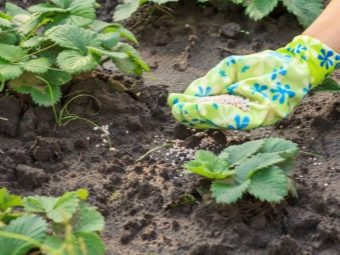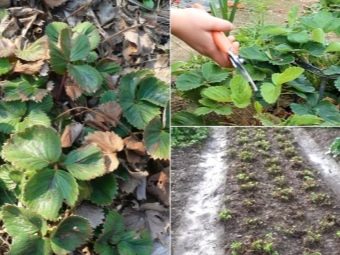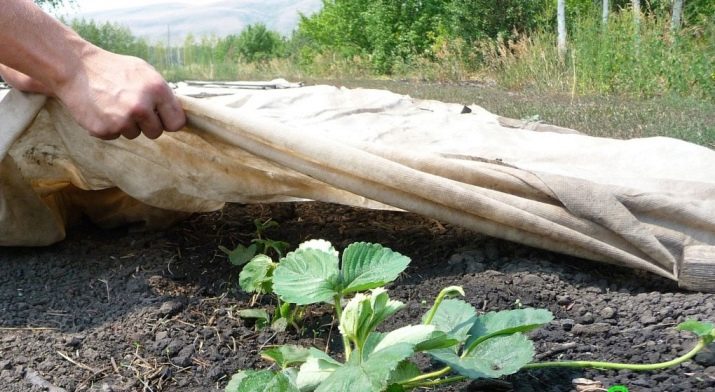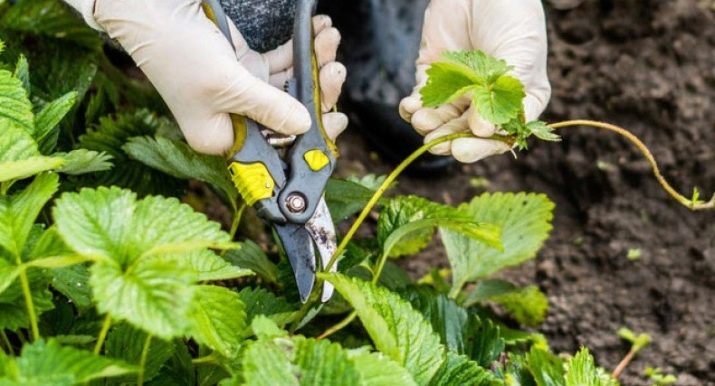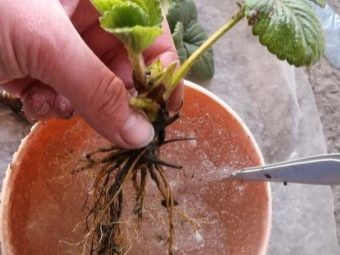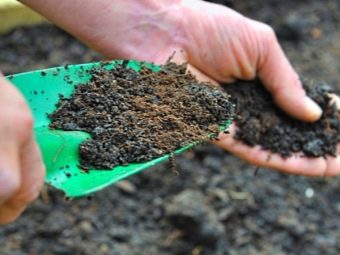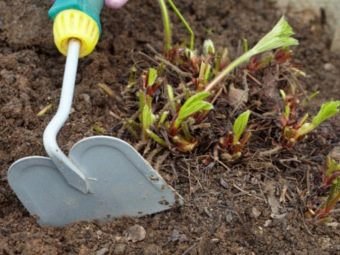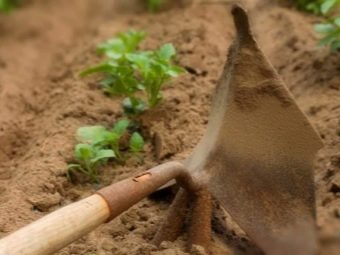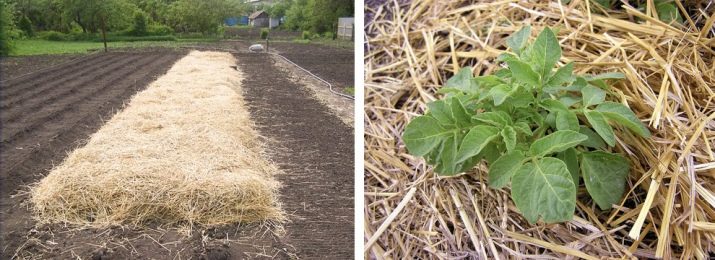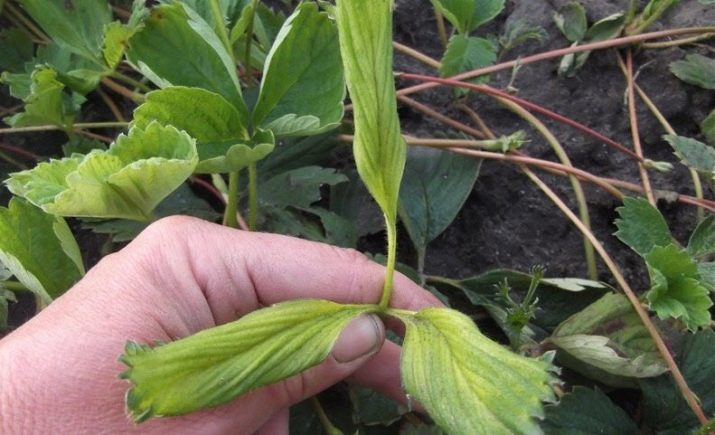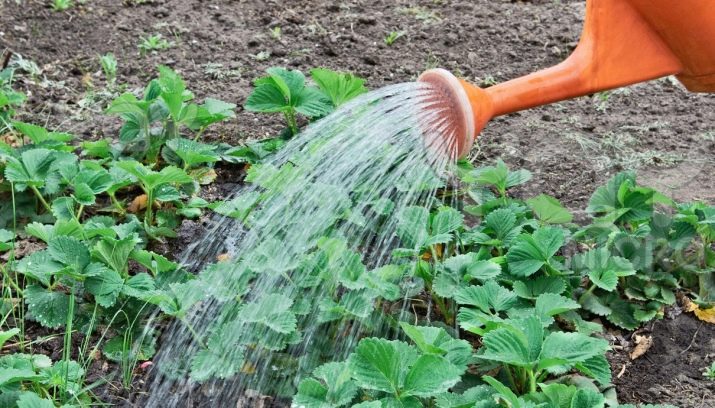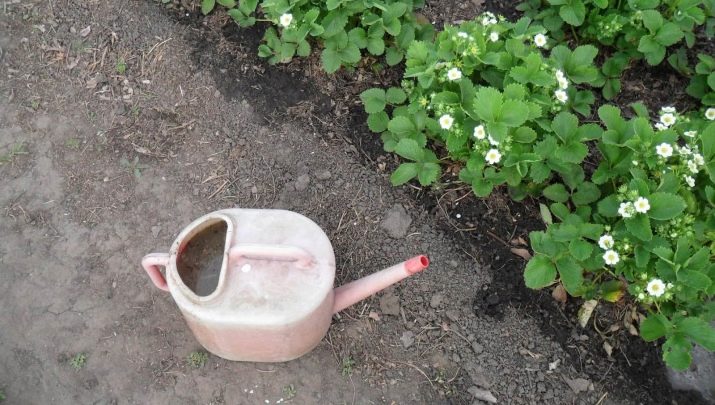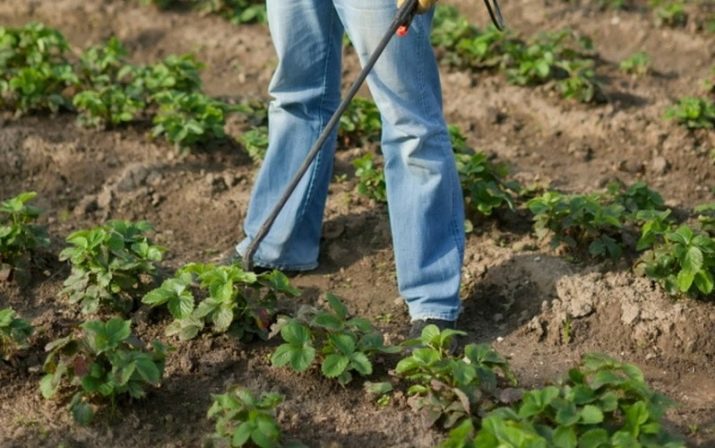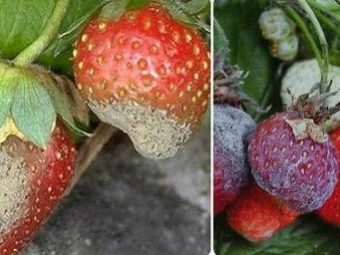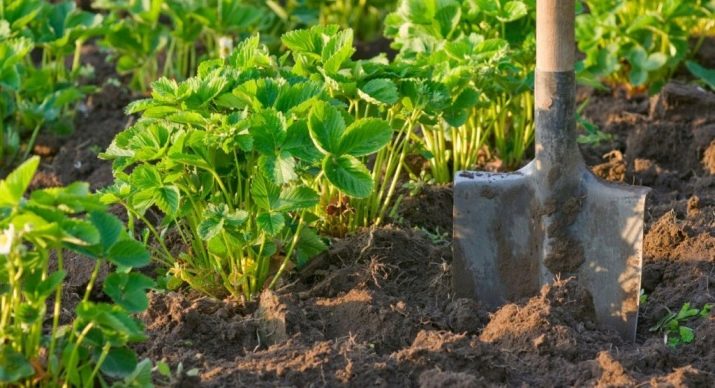Features care for strawberries in the spring

Although strawberries are not a particularly demanding crop, how they take care of them in the spring depends on how their further development will be. The more carefully and thoughtfully laid the "base" of agricultural engineering, the more abundant and tastier the harvest.
Features and general recommendations
The care of berries in spring includes, in general, traditional items: irrigation and fertilizing, pruning and weeding, as well as treatment for pests and diseases. However, in various regions there are some features of winter farming. For example, in the Urals, additional planting protection is required, consisting of tops or straw and an air cushion.
In the suburbs, it is common for the winter to cover with bushes of coniferous trees, and during the cold weather, pour snow on the beds themselves. That is why spring care for early strawberries will be slightly different, but the base will still remain united.
Post-winter treatment
As soon as the snow melts completely, strawberry beds will appear on the surface. As a rule, this is either April or May, depending on the climatic zone. You need to wait for warming to 5 degrees Celsius, after which you can begin to slightly open the landing. First, the shelter is removed for a couple of hours, then the deadlines increase every day. If it happens that the frosts return, the bushes will need to be completely wrapped up again. At that moment, when the comfortable temperature becomes stable, it will be possible to begin to partially open the landing at night, forming small holes for ventilation.
Somewhere in a week after this coverage is allowed to completely remove.
This should be done on a sunless day without any gusts of wind. It is believed that strawberries will be easier to get used to the cool, if the film is removed from the evening. It is recommended to start the next day with garbage collection: uproot the roots of weeds or bushes already harvested, collect the material used for mulching, throw out dried leaves and fruits. This cleaning should serve as a preventive measure for the reproduction of pests and the occurrence of diseases.
If during the weeding some strawberry bushes inadvertently leave the soil, then you should not worry. This happens only with sick and weak specimens, which means that they can be immediately destroyed.
Trimming and thinning
An important stage of spring care is the formation of bushes. With the help of a secateur, all dried leaflets are cut, as well as those that were affected by the disease. It is important to make it so that from the stalk remains from six to seven centimeters. In addition, if the strawberries will be grown exclusively for harvest, then you will need to cut the antennae, leaving a distance of five centimeters from the middle. In addition, overgrown beds are thinned.
Seating old bushes
The step-by-step instruction, which contains information on how to properly plant bushes in open ground, begins with the fact that strawberries are dug out of the ground, and the earth com is slightly shaken. The bush must be divided into parts, and each must have its own horn. Before planting strawberries, you need to remove those roots that are no longer capable of existence. (it is possible to determine them by brown color), and leave light appendages.
Then the seedlings should stay in the growth stimulator solution for 24 hours. The very same area on which the strawberries will grow, must be fertilized in seven days with fertilizers. Landing usually takes place on a warm but sunless day.
Weeding, loosening and mulching
It is recommended to complete each watering with loosening, this procedure facilitates the transport of oxygen to the root system and high-quality moisture. Loosening occurs at a depth not exceeding five centimeters, so as not to damage the roots, which are located close to the surface. Aisle can be processed with hoe, and the bushes themselves - with special devices.
Conducting loosening in the spring months, it is important not to cover the soil with young leaves.
If during the procedure it turns out that some of the roots were on the surface, they will need to be carefully folded. In the event that the bushes after winter have sunk into the soil, the outlets will need to be carefully excavated. The loosening procedure is usually accompanied by weeding. A good solution would be to immediately mulch - create a layer in height from four to seven centimeters. Peat, straw or sawdust are commonly used for this.
It is important to mention that the material must be dried. Mulch can also be made from polyethylene fabric, such a material will even allow the berries to ripen earlier and maintain their purity. Agrofiber is also considered a good option, which can prevent the spread of weeds. It is also allowed to use needles, branches, cones and even bark. However, to avoid oxidation of the soil, such mulch must be accompanied by wood ash.
The watering itself should be timely, but not abundant. The first irrigation is carried out when the soil has time to dry out after the snow has melted. At other times, it will be determined depending on the condition of the soil. For example, if the earth is easily transformed into dust, this suggests that it is time to water.
Also, the need for moisture can be determined by the appearance of the sheets: the more they curl, the more they need it.
Usually watering is carried out either in the early morning or in the evening after sunset, once a week. Water for this procedure is used that which has settled down for a day, and it is necessary to direct it not from top to down, but next to the plants. It is important to mention that during dry periods strawberries need to be watered not near the bushes, but between rows. When it becomes cold, irrigation stops altogether so as not to cause rotting of the landings.
Fertilizing and fertilizing
The fertilizer application scheme is standard.
- First feeding occurs in spring, when old leaves are removed, but the flowers have not yet appeared. Organic matter is usually brought in, for example, chicken manure, which simply unfolds at the base of the bush and is covered with earth. You can also dissolve 200 grams of culinary yeast in 0.5 liters of preheated water, after which everything is diluted in ten liters of liquid.
- Next feed is arranged when the strawberry is already blooming. It is best to use mineral complexes containing potassium and phosphorus - for each bush, use approximately 500 milliliters of solution. At this stage, you can make dressing containing nitrogen. For example, dilute two glasses of mullein and a tablespoon of ammonium sulfate in 10 liters of water. One plant will require about a liter of fertilizer. If the bushes were planted only in the spring, then you can stop at this with top dressing. If the strawberry has been developing for the second year, then it is allowed to periodically add organic matter, such as mullein or chicken droppings.
In addition, any strawberry will not harm the introduction of wood ash, which will crumble around the bush.
- In spring time strawberries should not only be fed at the root, but also spray the ground part with either organic matter or mineral solutions. Such processing will allow the ovaries to form more quickly and transform into large berries. Spraying is carried out only on those days when there is no wind and better in the evening.
Disease prevention
It is necessary to care for the culture in such a way that the probability of infection does not occur. Ideally, in the spring, the upper layer of the soil should be removed altogether, since it is in it that the insect larvae and spores of diseases overwinter. If this is not possible, then the soil will have to be thoroughly cleaned, burst and rid of weeds. Then the beds are sprayed for prevention. To protect strawberries from spotting and verticillis, it is sprayed with ready-made solutions containing copper.In addition, the first sheets are watered with 40 milliliters of ammonia dissolved in 10 liters of water.
Gray rot is eliminated with a solution with iodine.
Usually, 10 milliliters of the substance dissolve in 10 liters of water, and the bush is sprayed with the resulting liquid. To prevent the attack of the weevil, 50 grams of capsicum must be mixed with 10 liters of water, then spray the bushes with this solution. In addition, in the spring the culture is watered with water heated to 60 degrees Celsius, again to destroy insect larvae and disease spores.
Watering is carried out so that the distance from the watering can to the strawberry does not exceed 100 centimeters. In addition, next to the plants should be planted those crops that can scare away insects with its sharp smell. For example, it can be marigold or calendula.
Gardeners tips
Comments experienced gardeners say that a good harvest at the cottage is possible only with regular transplantation of plants. This means that every four or even three years strawberries must move to a new place. If you do this in the spring, the plants will have time to gain a foothold and in the future will cope with low winter temperatures. Transplantation is necessarily carried out on those areas where there are no drafts, and the surface is quite flat.
According to the crop rotation rule, these should be beds where onions with garlic, greens, peas with beans or carrots were previously grown. As predecessors, you should not choose tomatoes or potatoes.
Common mistakes
Beginning gardeners often make the same mistakes regarding spring care for the crop. If you find out in advance common misconceptions, you can save yourself from further problems in advance and ensure a good harvest. Common mistakes include applying excess fertilizer, damaging the “heart” of a plant, cutting leaves right under the root, insufficient watering, or inaccurate fertilizing.
The rules for the care of strawberries in the spring, see the following video.

